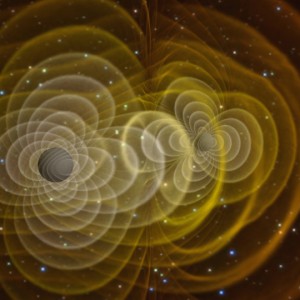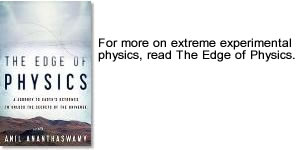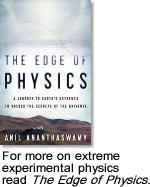Einstein Goes Underground

Credit: NASA
EUROPEAN PHYSICISTS want to go underground to build a sensitive observatory capable of detecting gravitational waves that are thought be generated when black holes merge. The “Einstein Observatory” will 100 times more sensitive than existing detectors, and will likely be able to detect gravitational waves generated just after the Big Bang.
Gravitational waves are ripples in the fabric of spacetime and are predicted by Einstein’s General Relativity. The basic idea behind the detection of such waves is pretty simple. Build two extremely long tunnels and bounce lasers back and forth in these tunnels, which can each be a few kilometres long. A passing gravitational wave will distort spacetime and hence change the lengths of these tunnels ever-so-slightly. If the tunnels are at right angles, then they will distort differently, and consequently the lasers will have to travel different lengths. The interference pattern generated by the interaction of the lasers can reveal the passage of a gravitational wave.
Of course, building such a detector to “see” extremely faint movements of spacetime is another matter altogether. The first generation of gravitational wave detectors, such as VIRGO and LIGO have not seen any such wave, but have set limits on what physicists can expect in terms of the frequency and intensity of gravitational waves from cosmic collisions of black holes, for instance.
Already, the next generation of detectors, such as Advanced LIGO, are being built, and physicists hope to detect the first waves with these better machines.
The biggest hindrance to building sensitive gravitational wave detectors is noise, which can create a stochastic background against which it is very difficult to detect real waves.
The Einstein Observatory plans to reduce such noise, especially seismic noise, by going about 100-200 metres underground. The design calls for 3 interferometers, each tuned to different frequencies of gravitational waves, and each with interferometer arms about 10 kilometres long.
If such an instrument does get built, it’ll make gravitational wave astronomy as routine as other forms of astronomy (such as optical and radio).
Here’s the press release from interactions.org


